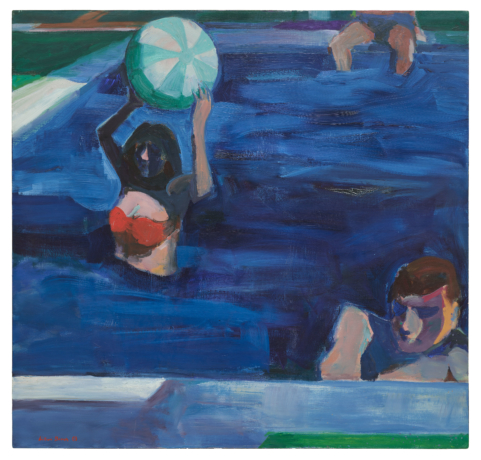
Exhibitions
PAUL WONNER AND THEOPHILUS BROWN: BREAKING THE RULES
Dixon Gallery and Gardens / 4339 Park Ave. January 28, 2024 - March 31, 2024
Paul Wonner, Theophilus Brown
In reaction to the widespread pursuit of Abstract Expressionism in the late 1940s and early 1950s, several avant-garde artists in the San Francisco Bay Area began to reengage with the visible world, applying the gestural style of action painting to depictions of people, landscapes, and still life. Two such artists were Paul Wonner (1920–2008) and William “Theophilus” Brown (1919–2012), who met in 1952 at the University of California, Berkeley, and remained a couple for fifty-six years.
Wonner and Brown are considered California artists, though neither was a native of the state. Wonner was born in Tucson, Arizona; Brown hailed from Moline, Illinois. They both earned Master of Arts degrees from Berkeley, and Wonner obtained an additional graduate degree in library science. During this period, they shared a studio above an automobile dealership in Berkeley, the same building where Richard Diebenkorn and Elmer Bischoff would come to have workspaces. These artists began to get together for drawing sessions, and the style they collectively created became known as Bay Area Figuration and helped to change the course of American art history.
Over time, both artists’ works became less gestural and more overtly representational and, in Wonner’s case, increasingly detailed and precise. Brown became best known for his psychologically evocative landscapes with classic bathers, as well as for his lonely urban scenes. Wonner also painted figures but received the greatest acclaim for his “baroque” still lifes laden with everyday objects, animals, and flowers. Breaking the Rules, which includes seventy-five paintings, watercolors, and drawings spanning the entirety of the artists’ careers, showcases all these genres in the most comprehensive exhibition of each artist’s work to date. The title of the show was inspired by a review of the 1988 exhibition, Painting from the San Francisco Bay Area, in which both artists’ works were featured prominently and were described as showing a “delightfully pugnacious spirit of rule-breaking.”

